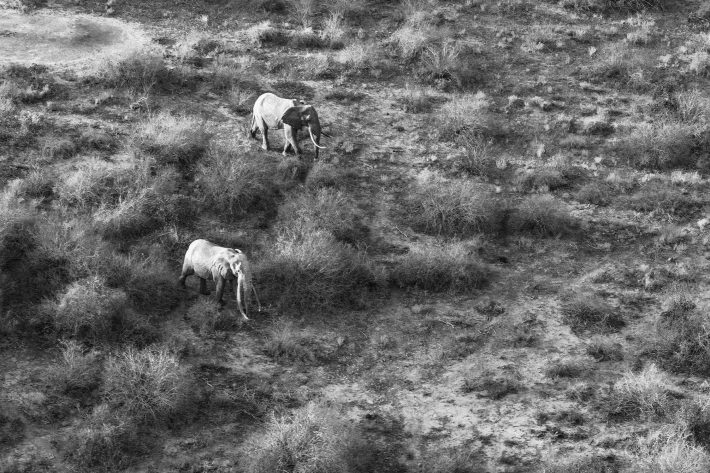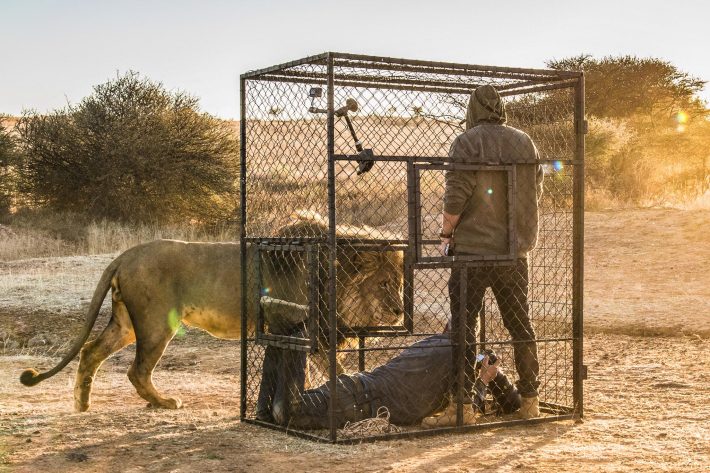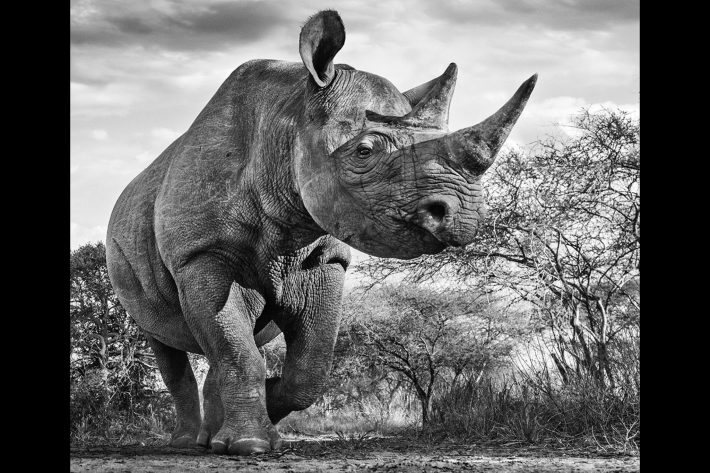David Yarrow came close to being trampled for this shot of an elephant, which is to be sold for a charity backed by Prince William
by Tony Allen-Mills via thetimes.co.uk

Lugard the bull elephant advances on a waterhole in southern Kenya DAVID YARROW
As one of the world’s best-known wildlife photographers, David Yarrow is used to travelling with a formidable array of hi-tech equipment in pursuit of a perfect shot. Yet the key to capturing this stunning picture of one of Africa’s largest elephants was a heap of rhino dung.
The black-and-white portrait of Lugard, a 48-year-old bull elephant that roams across Kenya’s Tsavo East national park, will be auctioned this week at a fundraising gala in London on behalf of the Tusk Trust, a conservation charity. The trust’s patron, Prince William, is expected to deliver a speech on the future of Africa’s wildlife.
Yarrow, 51, spent several days this month in a light aircraft looking for Lugard in an area of southern Kenya “half the size of Wales”. There are believed to be fewer than 30 tuskers of Lugard’s size left in Africa. “They don’t move at a huge pace, but if you approach them by foot, you might be killed,” said Yarrow, who was born in Glasgow and named young Scottish photographer of the year before becoming a hedge fund manager and fine art photographer. “If you surprise them, it’s game over — for you.”

Lugard, closest to the camera, was found by Yarrow after he flew for several days over Tsavo East national park
The main challenge was to locate Lugard in an area where the aircraft could land in time for Yarrow to position a camera in the animal’s path. “Sooner or later the elephant will move to water. You have to get there as quickly as possible, put a camera on the ground and get out of the way.”
After Lugard was seen heading to a waterhole near the Nairobi- Mombasa highway, there was no time to set up a remote-controlled camera on a tripod. “You want the camera to be as inconspicuous as possible, so the elephant’s behaviour does not change,” said Yarrow.
His solution was to cover his camera in rhino dung “so it looks like a dung heap with only the lens poking out”.
The result speaks for itself. “It’s not perfect: I had two seconds to put the camera down and run like hell.” But Lugard’s magnificent tusks are perfectly displayed and there is a sense of swaying advance in the position of his feet.
“The top of his head is cut off, but I can live with that,” Yarrow said. “The most important thing is you can see the eye.”
Prints of Yarrow’s photographs have fetched up to £60,000 at auction.
More photographs by David Yarrow

A South African lion — taken from inside a security cage

David Yarrow at work inside the cage

This photograph of a rhino was taken at Mkomazi Game Reserve in Tanzania last year
